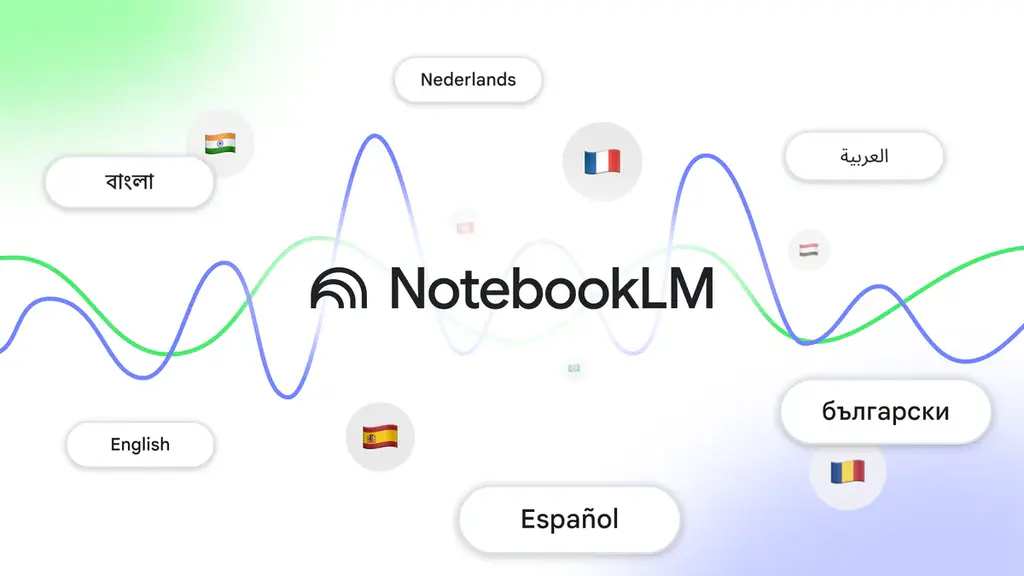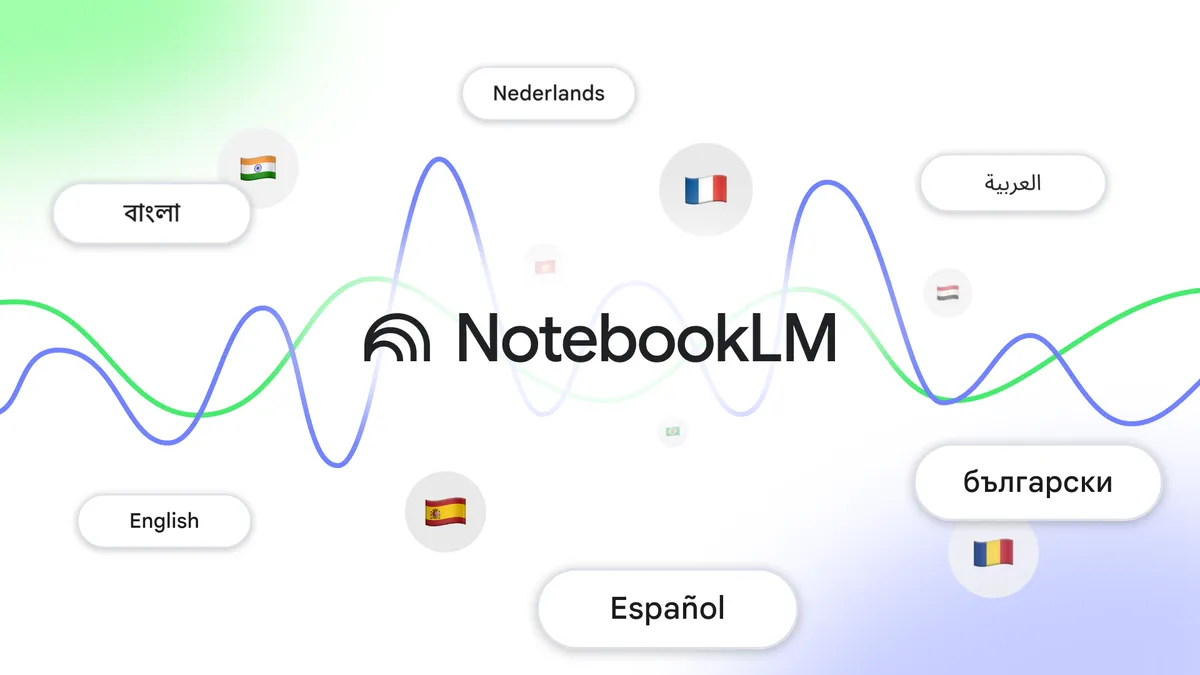The information age is accelerating, and with it, the need to access and process knowledge efficiently and without barriers. Google, always at the forefront of technology, has just taken a giant step toward making learning and research more inclusive and flexible.
The latest update to NotebookLM, Google’s AI-powered research and note-taking tool, introduces a feature that promises to change how we interact with large volumes of text: Audio Overviews are now multilingual, available in over 50 languages.
The Multilingual Revolution in NotebookLM
Launched at the end of last year, Audio Overviews quickly became a hit. The ability to turn documents and text sources into engaging summaries, in a podcast-like conversational format, has provided immense value to users looking for a more dynamic way to absorb content.

Now, this functionality has been dramatically expanded. Thanks to native audio support from the Google Gemini model, Audio Overviews can be generated in a wide range of languages.
Imagine having your study documents, research articles, or even books converted to audio in the language of your choice. This language expansion, ranging from Afrikaans to Turkish, including Portuguese, Hindi, and many more, opens doors to a global audience.
How Does the Audio Magic Work?
The mechanics behind Audio Overviews are surprisingly simple for the end user. You upload your sources to NotebookLM, which can be a PDF document, a text file, or even links to online articles.
Previously, the audio overview was generated in your account’s default language. With the update, a new “Output Language” option has been added to NotebookLM’s settings. This is where the magic happens.
Just select your desired language in this setting, and your Audio Overviews, along with chat responses, will be generated in that language. You can switch between languages at any time, making it easy to create multilingual content or study materials.
This feature is a clear example of how AI is making our daily routines easier, making tasks that once required a lot of time or resources—like translating and synthesizing information—much more accessible.
Breaking Barriers: The Impact on Education and Work
The classic example of application is in education. A teacher can gather materials from various sources and in different languages on a topic, such as art history or quantum physics. They might include an article in English, a case study in Spanish, and an excerpt from a book in French.
Students, in turn, can upload these materials to NotebookLM and request an Audio Overview in the language they are most comfortable with or are learning. This not only demonstrates the evolution of artificial intelligence, but also democratizes access to knowledge by removing one of the most significant barriers: language.
In the workplace, this functionality is also powerful. Professionals handling international documentation, global reports, or research in different markets can quickly get audio summaries in their native language, optimizing time and comprehension. As we see discussions about AI’s impact on work, tools like this show their transformative potential.
A Look to the Future of the Tool
Google emphasizes that this is just an initial version of the feature. The company plans to continue refining and expanding Audio Overviews based on user feedback. This suggests a continued commitment to improving the tool and making it even more useful and versatile.
Deep integration with the Gemini model is key to this multilingual capability, and we’re likely to see even more AI-based features incorporated into NotebookLM in the future, making it an increasingly indispensable assistant for anyone working with information.
Competitors and Alternatives in the AI Audio Market
While NotebookLM with Audio Overviews stands out for its integration with your research sources, there are other tools in the AI audio market. Some focus on transcription, others on text-to-speech summarization, and some generate audio from scripts. Here’s a simplified comparison:
| Feature | NotebookLM (Audio Overviews) | AI Transcription Tool (e.g., Otter.ai) | Text-to-Speech (TTS) Tool |
|---|---|---|---|
| Audio Generation from Sources (Docs/Web) | Yes (Summary/Overview) | No (Transcribes Existing Audio) | Yes (From Written Text) |
| Extensive Multilingual Support | Yes (>50 languages) | Varies (Generally fewer languages for accurate transcription) | Varies (Quality and naturalness depend on language) |
| “Podcast-like” Format (Conversation) | Yes | No (Original Audio + Transcription) | No (Synthesized Voice Reading Text) |
| Main Focus | Research and Source Analysis | Meeting Transcriptions and Notes | Text-to-Voice Conversion |
As the table illustrates, NotebookLM’s Audio Overviews fill a specific and powerful niche, focusing on synthesizing information from varied sources and presenting it in a conversational audio format. This is less common in other AI audio tools that focus more on direct text-to-speech conversion or transcription.
Frequently Asked Questions about Multilingual Audio
- How do I use Audio Overviews in a different language?
Go to NotebookLM settings and select the desired language under the “Output Language” option. - Are Audio Overviews generated using the original voices from the sources?
No, they are generated using Gemini’s speech synthesis, creating an audio summary based on your sources in a conversational format. - Can I upload sources in different languages and get an audio summary in a single language?
Yes! This is one of the great advantages. You can upload documents in Portuguese, English, Spanish, etc., and receive one Audio Overview in, say, English. - Does audio quality vary between languages?
Speech synthesis quality can have slight variations, but Google uses advanced models (Gemini) to ensure the best experience possible across all supported languages.
Including over 50 languages in Google NotebookLM’s Audio Overviews is, in my opinion, a significant step forward. It not only makes the tool more accessible to a global audience but also showcases AI’s potential to break language barriers in practical and innovative ways. The ability to absorb complex information in an engaging audio format and in your chosen language is a game-changer for students, researchers, and professionals. It is another step toward a future where knowledge is truly universal.
Try out this new feature yourself and share your impressions in the comments below! How could this innovation impact your studies or work?









